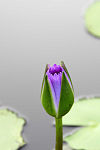| Revision as of 13:53, 5 February 2018 editTom.Reding (talk | contribs)Autopatrolled, Extended confirmed users, Page movers, Template editors3,942,625 editsm Add from=Q3349580 to {{Taxonbar}}; WP:GenFixes on, using AWB← Previous edit | Revision as of 22:54, 22 March 2021 edit undoShortDescBot (talk | contribs)Bots306,872 edits ShortDescBot adding short description "Species of water lily"Next edit → | ||
| Line 1: | Line 1: | ||
| {{Short description|Species of water lily}} | |||
| {{italic title}} | {{italic title}} | ||
| {{more citations needed|date=November 2011}} | {{more citations needed|date=November 2011}} | ||
Revision as of 22:54, 22 March 2021
Species of water lily
| This article needs additional citations for verification. Please help improve this article by adding citations to reliable sources. Unsourced material may be challenged and removed. Find sources: "Nymphaea capensis" – news · newspapers · books · scholar · JSTOR (November 2011) (Learn how and when to remove this message) |
| Cape blue waterlily | |
|---|---|

| |
| Nymphaea capensis at Kovalam beach | |
| Scientific classification | |
| Kingdom: | Plantae |
| Clade: | Tracheophytes |
| Clade: | Angiosperms |
| Order: | Nymphaeales |
| Family: | Nymphaeaceae |
| Genus: | Nymphaea |
| Species: | N. capensis |
| Binomial name | |
| Nymphaea capensis Thunb. | |
Nymphaea capensis (Cape blue waterlily) is an aquatic flowering plant of the water lily family Nymphaeaceae.
Native to Africa, the plant is found growing abundantly in freshwater habitats in tropical regions of Africa, and as an introduced species in Australia, the state of Florida, and other tropical areas. This plant's bulb can survive relatively long periods of time without rainfall in a dry river bed. During the rain season, as the riverbed or bog fills up, the bulb will sprout leaves and flowers.
The Cape blue waterlily grows best in full sun to semi-sun and in relatively shallow water.
Gallery
References
- "Nymphaea capensis". Germplasm Resources Information Network. Agricultural Research Service, United States Department of Agriculture. Retrieved 8 November 2011.
This plant article is a stub. You can help Misplaced Pages by expanding it. |

